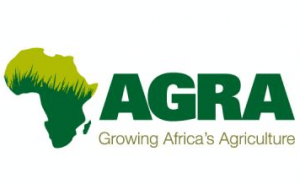African countries including Ghana improve food production, nutrition, by paying attention to agriculture – Report
 A New report by the Alliance for a Green Revolution in Africa says African countries that have paid attention to agriculture have increased food production and improved GDP growth and nutrition. Ghana is among the countries that have achieved this success.
A New report by the Alliance for a Green Revolution in Africa says African countries that have paid attention to agriculture have increased food production and improved GDP growth and nutrition. Ghana is among the countries that have achieved this success.
The report issued in Nairobi, Kenya September 6, 2016 says a decade of intense domestic attention to farmers and food production has generated “the most successful development effort” in African history, with countries that made the biggest investments rewarded with sizeable jumps in both farm productivity and overall economic performance.
AGRA’s 2016 African Agriculture Status Report finds that “after decades of stagnation, much of Africa has enjoyed sustained agriculture productivity growth since 2005, and as a result, poverty rates have declined in places like Ghana, Rwanda, Ethiopia and Burkina Faso.
According to the report, agriculture has had its biggest impact in countries that moved quickly to embrace the African Union’s Comprehensive African Agriculture Development Programme or CAADP, which was created in 2003.
“A key component of CAADP was its call for African governments to allocate 10 per cent of national budgets to agriculture and to aim for six percent annual growth in the sector,” it says.
The report indicates that even if these countries that have achieved success didn’t hit the 10 per cent targets, early adopters of the CAADP goals have seen productivity on existing farmlands rise by 5.9 to 6.7 per cent per year.
“This boost in turn helped spur a 4.3 per cent average annual increase in overall GDP. Those later to the game achieved anywhere from a 3 to 5.7 per cent growth in farm productivity and a 2.4 to 3.5 per cent increase in GDP.,” it adds.
It further notes that, countries that sat on the sidelines saw farm productivity rise by less than 3 per cent and GDP rise by only 2.2 per cent.
“The trend is similar for declines in malnutrition, with countries that have embraced the CAADP process experiencing annual declines ranging from 2.4 to 5.7 per cent, while those who have not averages only a 1.2 per cent decline,” it says.
By Emmanuel K. Dogbevi
